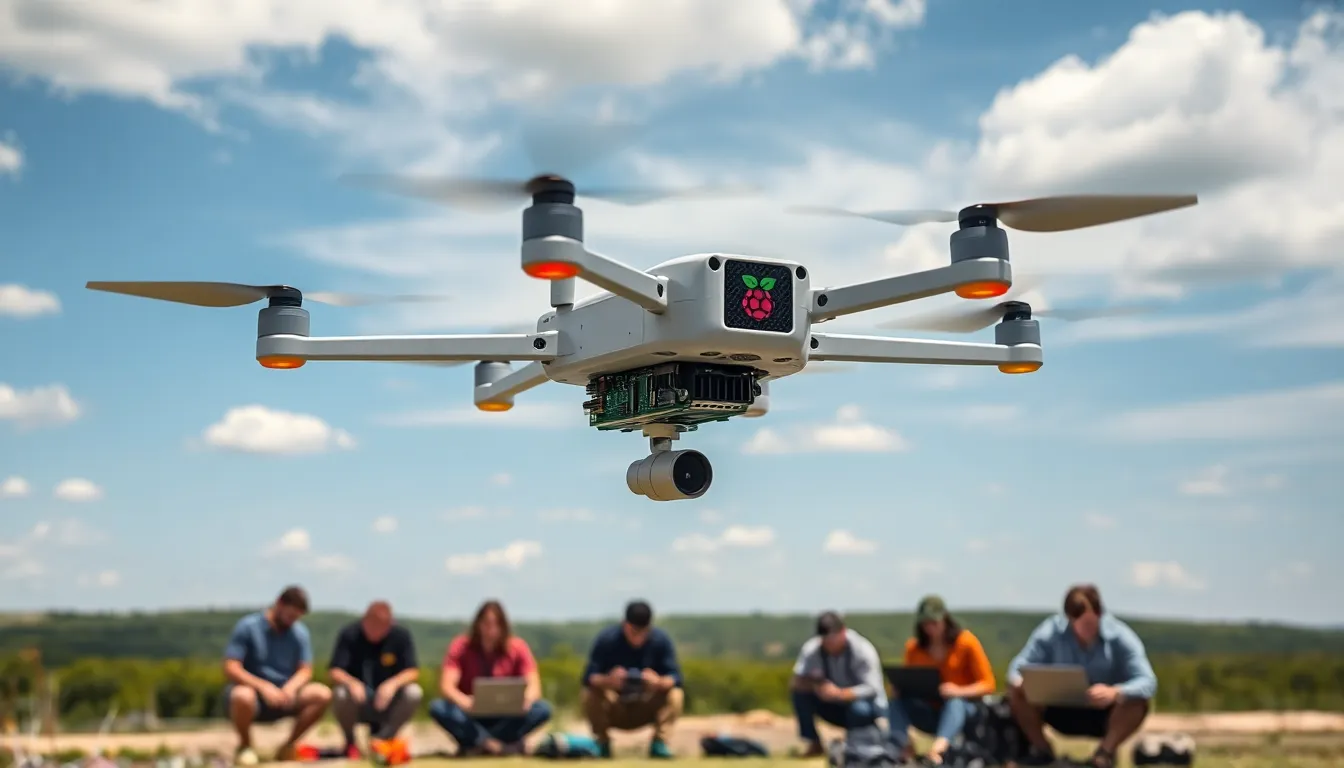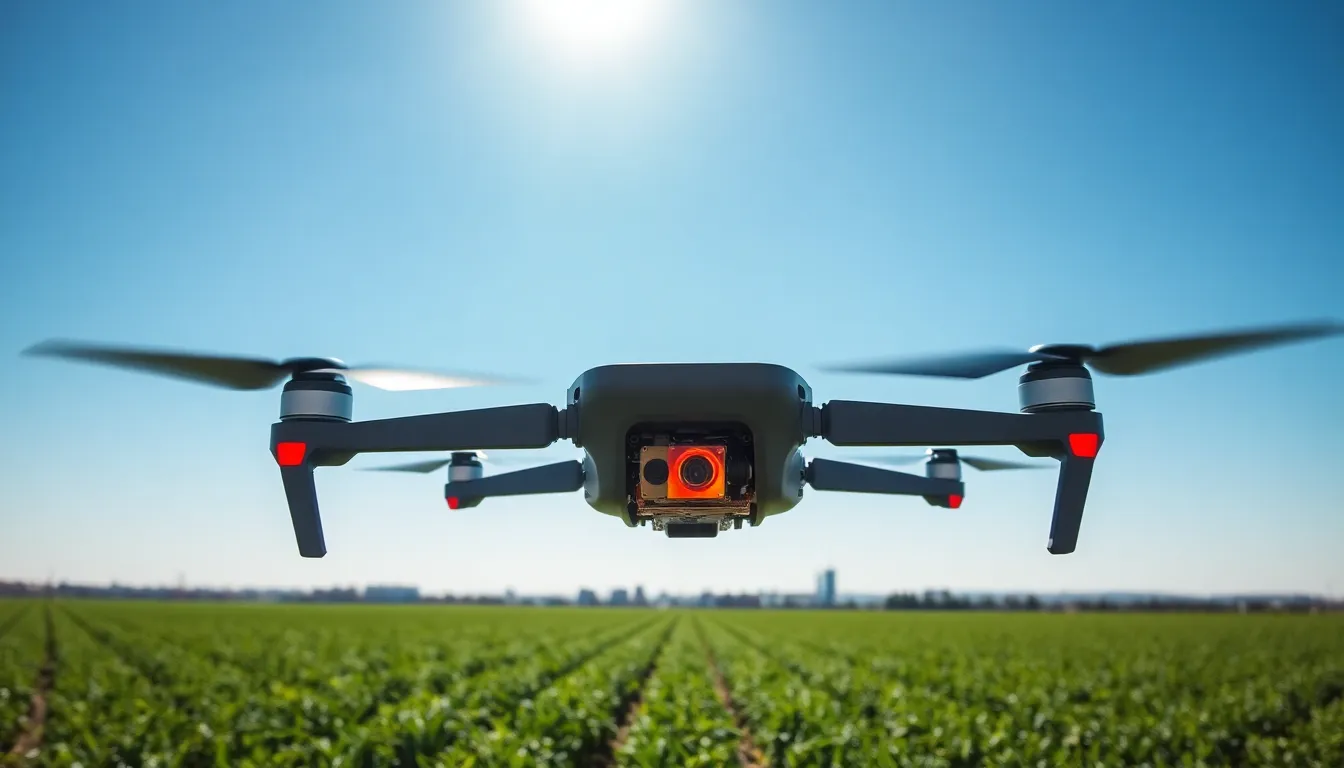Table of Contents
ToggleEver wondered how drones spot things that escape the naked eye? Imagine a tiny powerhouse like the Raspberry Pi Zero zooming through the skies, transforming into a thermal imaging marvel. With the perfect blend of cutting-edge tech and accessibility, the Raspberry Pi Zero thermal drone opens new horizons for enthusiasts and professionals alike. Buckle up, because we’re diving deep into how this compact contraption is revolutionizing the world of aerial imaging.
Overview of Raspberry Pi Zero Drones

Raspberry Pi Zero drones are compact and affordable, making them ideal for hobbyists and professionals. These devices leverage the incredible versatility of the Raspberry Pi Zero, pulling off incredible feats typically reserved for larger, pricier drone platforms. The lightweight design allows for easy integration of various components, enabling the incorporation of thermal cameras and other sophisticated sensors.
Key Features of the Raspberry Pi Zero
The Raspberry Pi Zero boasts features that help an impressive range of applications. Its GPIO pins allow users to connect various sensors and additional hardware. Its small size means it can be fitted into tight spaces, making it a great choice for custom drone builds. Also, with Wi-Fi and Bluetooth capabilities, it offers seamless interaction with other devices, enhancing the overall functionality of the drone.
Benefits of Using Thermal Imaging in Drones
Thermal imaging adds an exciting dimension to drone technology. It allows the detection of heat signatures, giving insights that conventional cameras simply can’t provide. Whether for security, environmental monitoring, or search operations, thermal imaging drones are becoming indispensable in various fields.
Applications of Raspberry Pi Zero Thermal Drones
The versatility of Raspberry Pi Zero thermal drones comes from their ability to adapt to a variety of scenarios. From monitoring crops to surveying vast landscapes, their applications are Far-reaching and impactful. Each deployment allows users to gather unique insights that plain visuals can miss.
Environmental Monitoring
Using thermal drones for environmental monitoring has never been easier. These drones can detect temperature changes in ecosystems, helping scientists track climate changes or wildlife behavior. Their ability to cover large areas quickly makes them an efficient solution for those studying environmental patterns.
Agricultural Uses
Farming isn’t just a science: it’s an art, and Raspberry Pi Zero thermal drones are becoming the paintbrushes for farmers everywhere. By analyzing crop health and irrigation needs from above, farmers gain insights that can lead to better yields and more efficient resource usage.
These drones help identify stressed plants, ensuring timely interventions can take place. They also monitor soil moisture levels, which can prevent water wastage and enhance sustainability practices. With the capability to provide precise data, farmers using thermal drones are one step ahead in a competitive market.
Setting Up Your Raspberry Pi Zero Thermal Drone
Creating a thermal drone requires knowledge and careful planning. But fear not, it’s not rocket science. Setting up your Raspberry Pi Zero thermal drone can be enjoyable and fulfilling.
Essential Components and Hardware
The essentials include the Raspberry Pi Zero, a compatible thermal camera, a drone frame, batteries, propellers, and necessary wiring. Each component plays a vital role in ensuring operational efficiency, so choose wisely.
Software and Configuration
Once the hardware is in place, the next step involves configuring the software. Installing the right operating system can empower your drone’s capabilities. Tools like Python can help customize sensor readings, making setups both functional and enjoyable.
Best Practices for Operation and Maintenance
Operating a Raspberry Pi Zero thermal drone may seem straightforward, but best practices can significantly enhance experience and longevity.
Optimization for Flight Time and Performance
Flying smoothly not only prolongs battery life but also enhances the quality of thermal data collected. Fine-tuning flight paths, checking the weight distribution, and choosing the right battery can result in smoother and longer flights.
Safety Considerations
Safety should always be a priority. Understanding local regulations and ensuring the drone adheres to them is crucial for legal and ethical flying. Regularly inspecting hardware and maintaining components ensure a safe and enjoyable flight experience.







